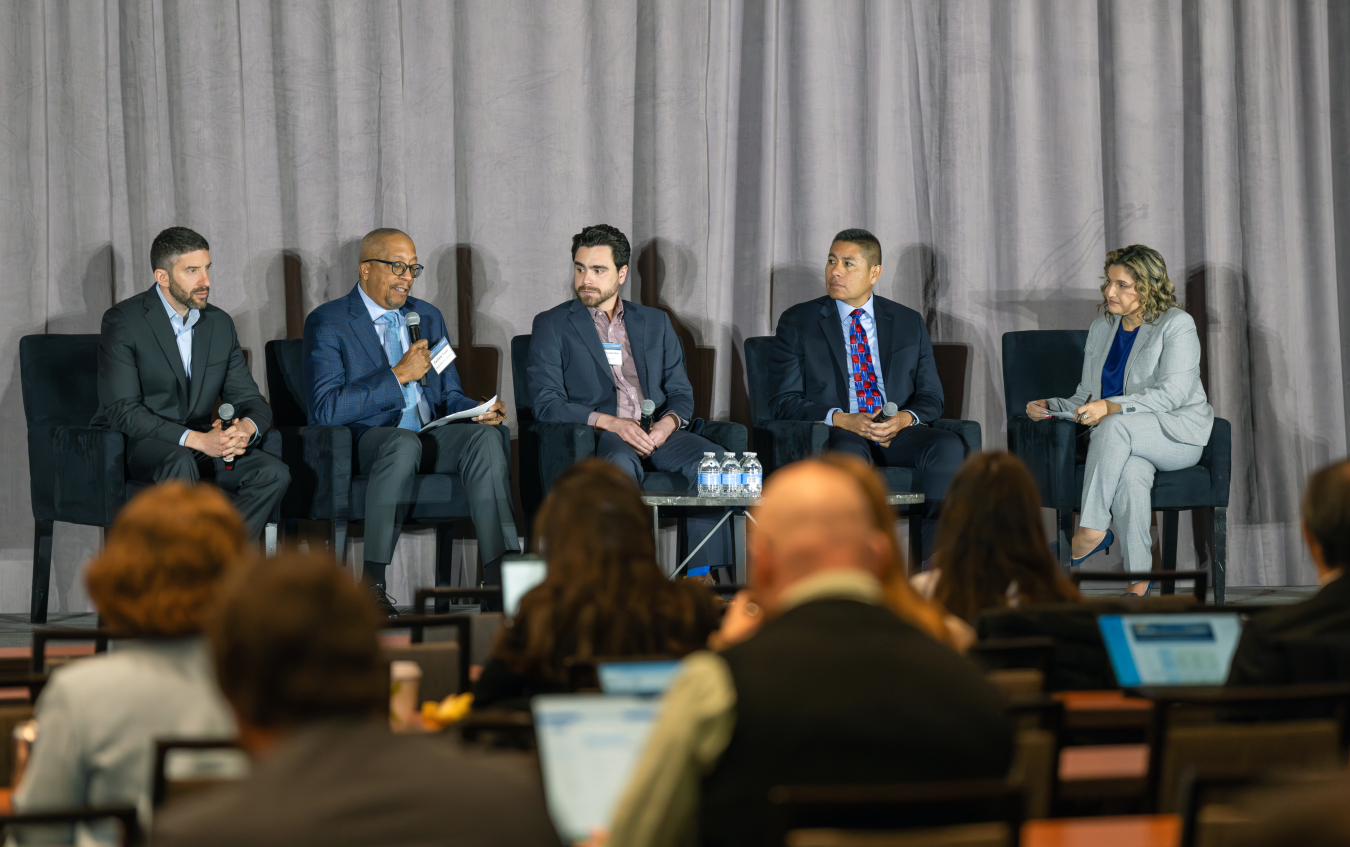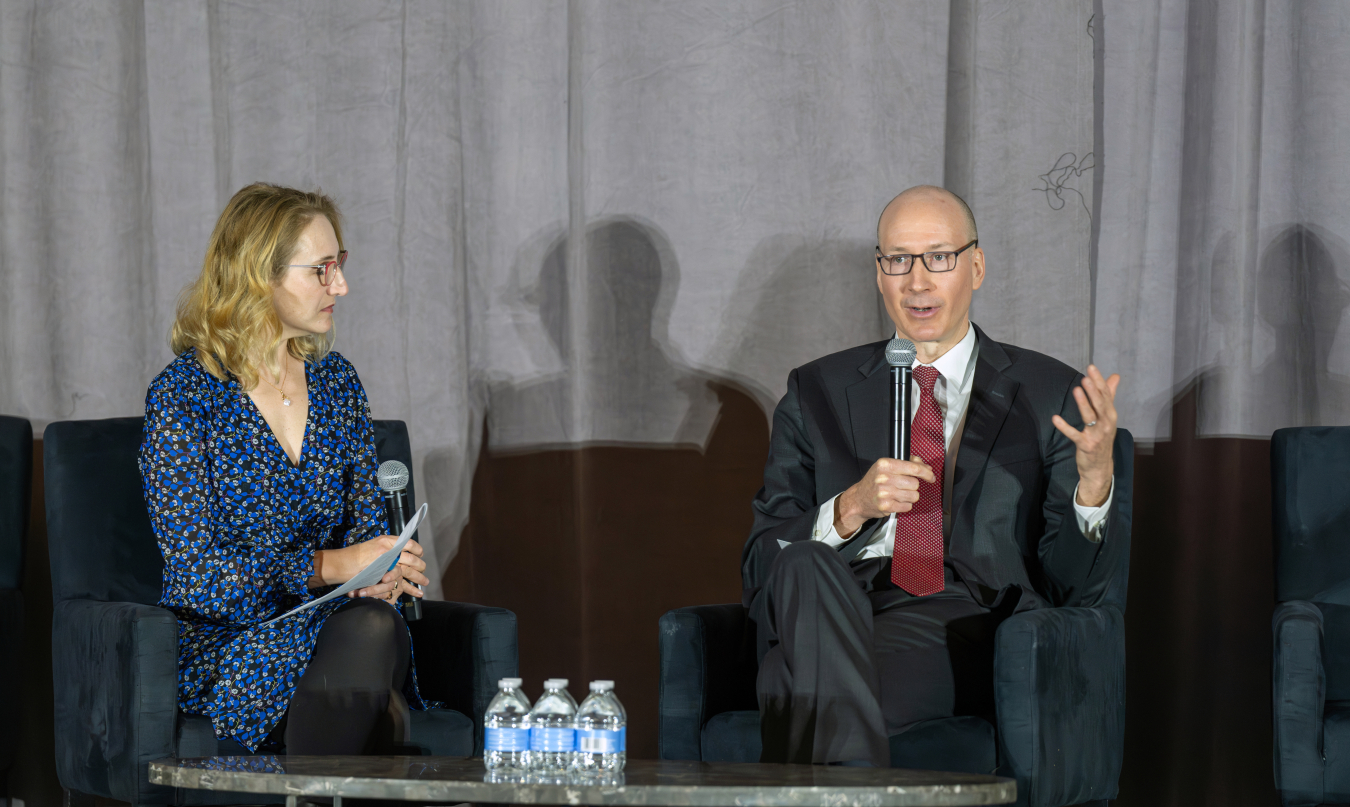In February, CESER and the U.S. Department of Energy Grid Modernization Initiative (GMI), hosted the inaugural Energy Transition Summit in Arlington, Virginia, bringing together experts from across the energy sector to help establish and strengthen connections between those working in energy security and those focused on the grid of the future.
Office of Cybersecurity, Energy Security, and Emergency Response
March 20, 2024In February, CESER and the U.S. Department of Energy Grid Modernization Initiative (GMI), hosted the inaugural Energy Transition Summit in Arlington, Virginia, bringing together experts from across the energy sector to help establish and strengthen connections between those working in energy security and those focused on the grid of the future.
The Energy Transition Summit was a who’s who of energy cybersecurity leadership and experts from across government and industry. Keynotes included members of Congress, representatives from the White House Office of the National Cyber Director, DOE leaders, energy sector stakeholders, cyber solutions providers, investors, national laboratories, and academia.
The collaboration of the Grid Modernization Initiative and CESER created an event that will build innovative partnerships in the future and further invigorate the clean energy transition. The Summit provided a unique opportunity for experts and thought leaders to strategize, find new venues for project integration, and champion their shared goals.
Below we share our top five highlights from the 2023 event, along with our top three takeaways from the mainstage presentations. Click here to read GMI’s Summary of the event.
Top Five Event Highlights
The Cyber Plenary: Anne Neuberger and Nana Ayensu: The Wednesday cyber plenary featured both Anne Neuberger, Deputy National Security Advisor for Cyber and Emerging Technology and Nana Ayensu, Special Assistant to the President for Climate Policy, Finance, and Innovation. Mr. Ayensu spoke to the role digitization can play in optimizing energy efficiency and further enabling system-level resilience. Ms. Neuberger addressed how AI could be used to detect occurrences which are outside of baseline or to aggregate and integrate information into response planning.

The Cybersecurity Leadership Panel: Moderated by CESER’s Principal Deputy Director Lili Colon, panelists included Eric Goldstein, Cybersecurity and Infrastructure Security Agency; Juan Torres, National Renewable Energy Laboratory (NREL); Zach Tudor, Idaho National Laboratory (INL); and John Franzino, GridSecurity. This panel discussed the need to take a holistic, integrated approach to operational technology (OT) and informational technology (IT) modernization. Deliberate investment, planning, and coordination among energy stakeholders will enable the creation of a more open, interconnected, and resilient sector over time.
The Parallel Tracks: Conference attendees has their pick of more than 40 sessions, divided between two parallel tracks. The GMI track took a deep dive into the six GMI pillars – markets, planning, operations, devices, flexibility, and resilience – and examined synergies for their advancement through diverse and robust partnerships. Simultaneously, CESER’s cybersecurity track facilitated discussions and industry panels covering cyber risk, policy and regulatory considerations, technology innovation and solutions, the cyber workforce, training, and exercises.
The NARUC Session on Cybersecurity Baselines: On Monday, CESER hosted a panel with representatives from the National Association of Regulatory Utility Commissioners focused on the recently released cybersecurity baselines. Experts discussed the baselines’ ultimate objectives, the approach taken to develop the first iterations of the baselines, and the implementation strategy ahead.
The CyberStrike STORMCLOUD Exercise: Held on the very first day of the event, this hands-on training helps the existing cybersecurity workforce understand how adversaries conduct cyber campaigns against industrial control systems used in the energy sector and the offers a chance to practice the skills needed to counteract these threats.
Top Three Takeaways from Mainstage Speakers

Failure is Not an Option: David Turk, Deputy Secretary of the Department of Energy made it clear that realizing a clean energy future that is also inherently resilient and reliable is critical, and that the sector will succeed in making this transition in partnership with the government.
Opportunity Awaits: Congressman Andrew Garbarino spoke to the workforce opportunities the clean energy transition provides. Drenan Dudley, Deputy Director of the Office of the National Cyber Director echoed this point and noted the half-million vacant cybersecurity jobs in the United States in 2023.
Tech Investments Will Pay Off: Congresswoman Marilyn Strickland and Justina Gallegos, Deputy Director of the Office of Science and Technology Policy both touched on the opportunities for technological advancement, and the power of investment to leverage technologies such as artificial intelligence and machine learning to build a grid far more prepared for this decisive decade.
Click here to learn more about the Energy Transition Summit and view the full event agenda.

